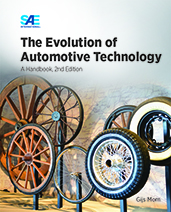Technical Paper
Evaluation of closed-loop combustion phase optimization for varying fuel compensation and cylinder balancing in a HD SI-ICE
2024-04-09
2024-01-2837
Alternative fuels, such as natural and bio-gas, are attractive options for reducing greenhouse gas emissions from combustion engines. However, the naturally occurring variation in gas composition poses a challenge and may significantly impact engine performance. The gas composition affects fundamental fuel properties such as flame propagation speed and heat release rate. Deviations from the gas composition for which the engine was calibrated result in changes in the combustion phase, reducing engine efficiency and increasing fuel consumption and emissions. However, the efficiency loss can be limited by estimating the combustion phase and adapting the spark timing, which could be implemented favorably using a closed-loop control approach. In this paper, we evaluate the efficiency loss resulting from varying gas compositions and the benefits of using a closed-loop controller to adapt the spark timing to retain the nominal combustion phase.

